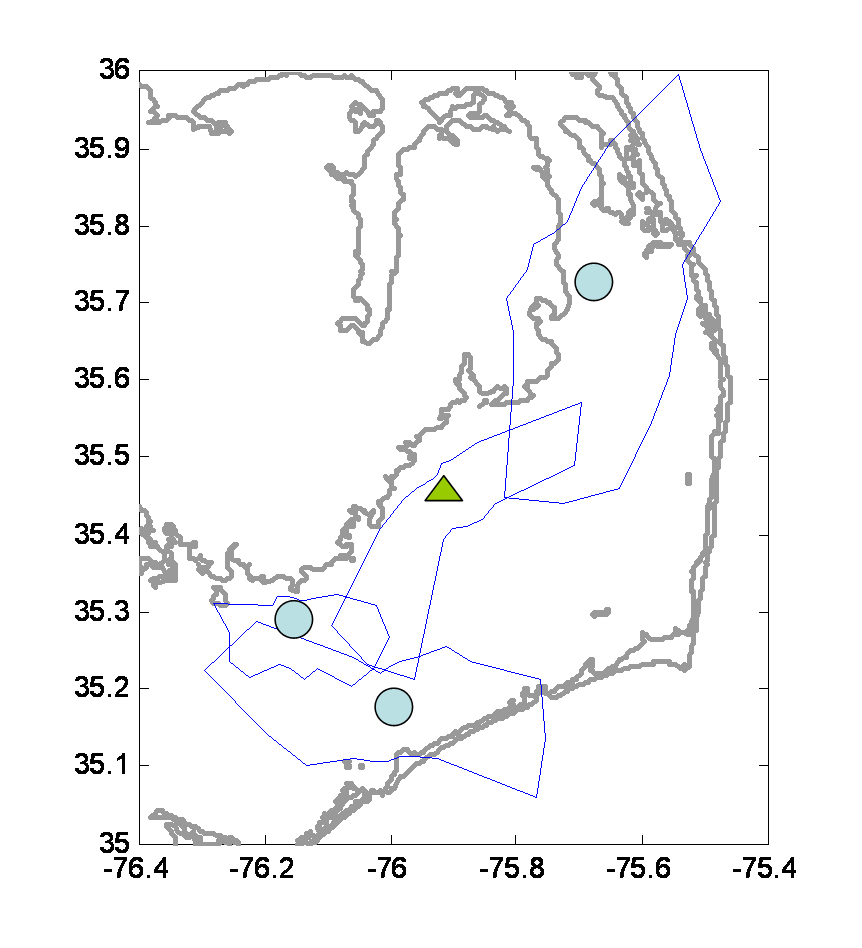
The North Carolina Division of Marine Fisheries maintains oyster sanctuaries for breeding purposes. For these sanctuaries to succeed, oyster larvae should be able to travel between sanctuaries. In ecological terms, we want to improve the connectivity of the oyster populations in Pamlico Sound.
There are several ways to predict the motions of oyster larvae. Tracking individual larvae is too difficult, but we can use inexpensive commercially made drifting buoys as a stand-in, or perhaps "float-in" for the larvae. We can also learn a surprising amount using current meters deployed in fixed locations for a few months at a time.
This image shows the locations of three existing oyster sanctuaries in Pamlico Sound (circles) and one new sanctuary (triangle). The irregular polygons show all the places surface-drifting larvae can reach within 24 hours from each location. One goal of oyster restoration is to establish a connected network of sanctuaries, where the larvae can move easily between different reefs. Based on this plot, I suggested establishing a new sanctuary at Gibbs Shoal (trinangle), and that sanctuary was built in 2009.
